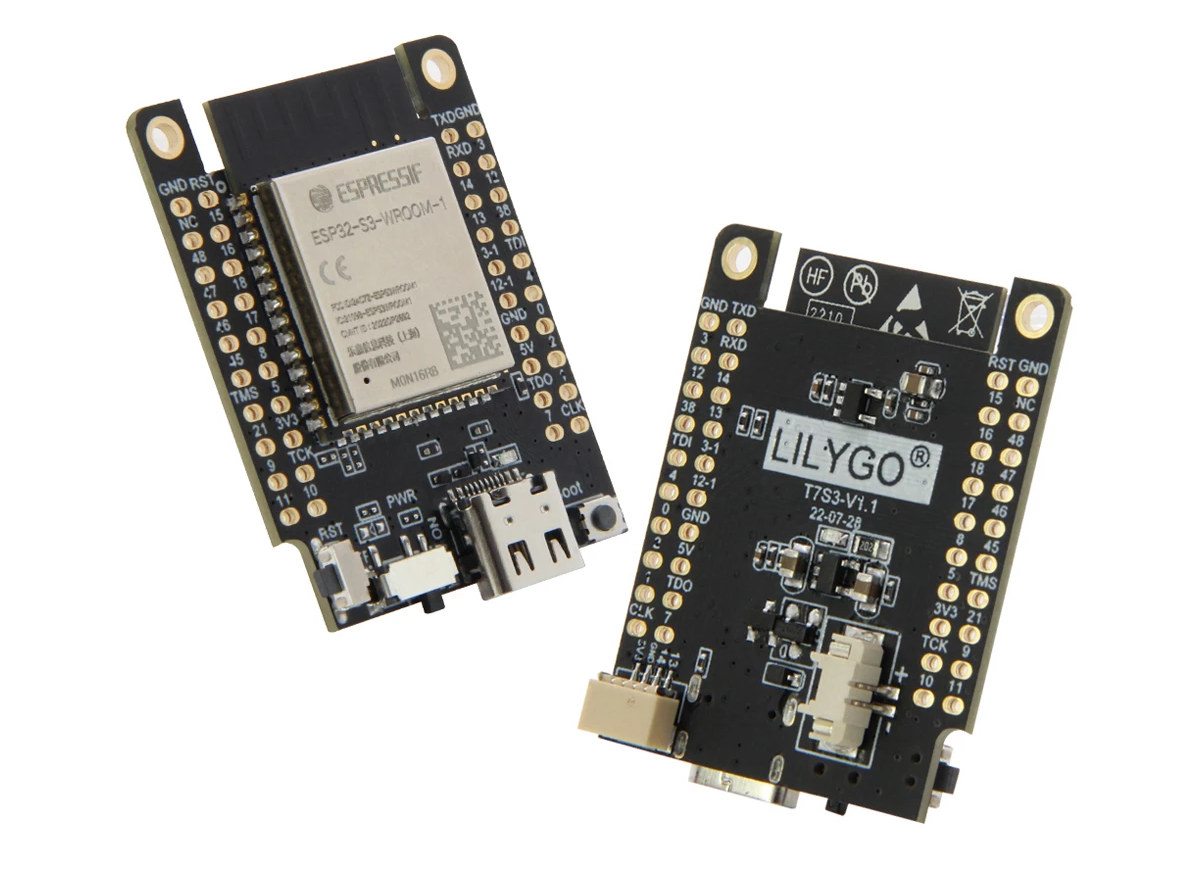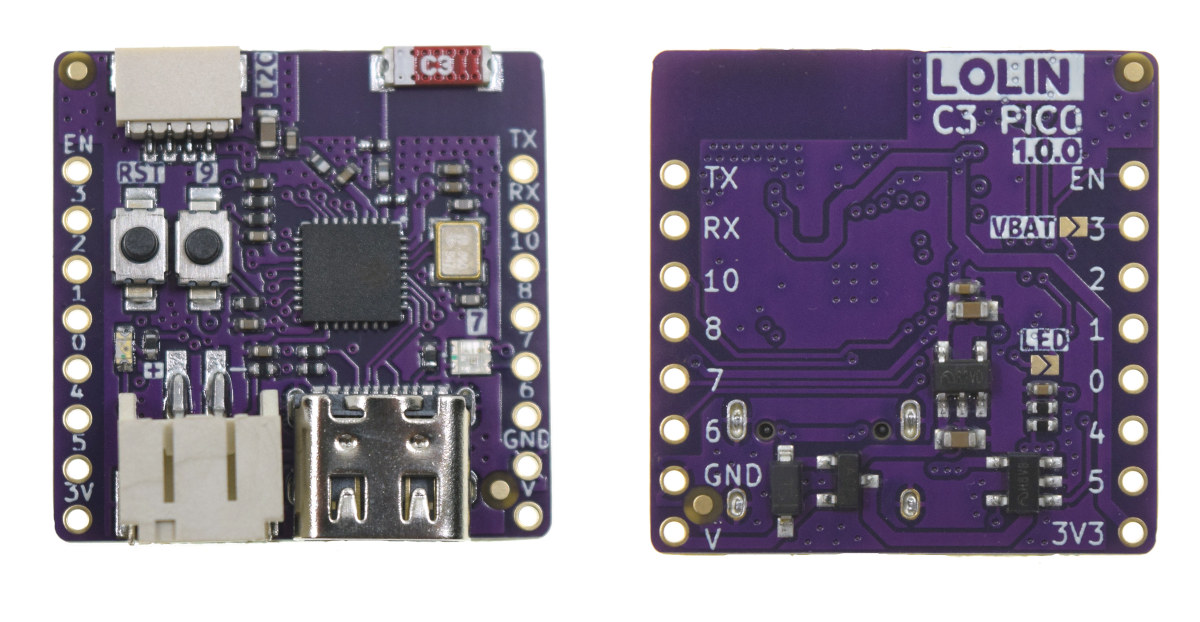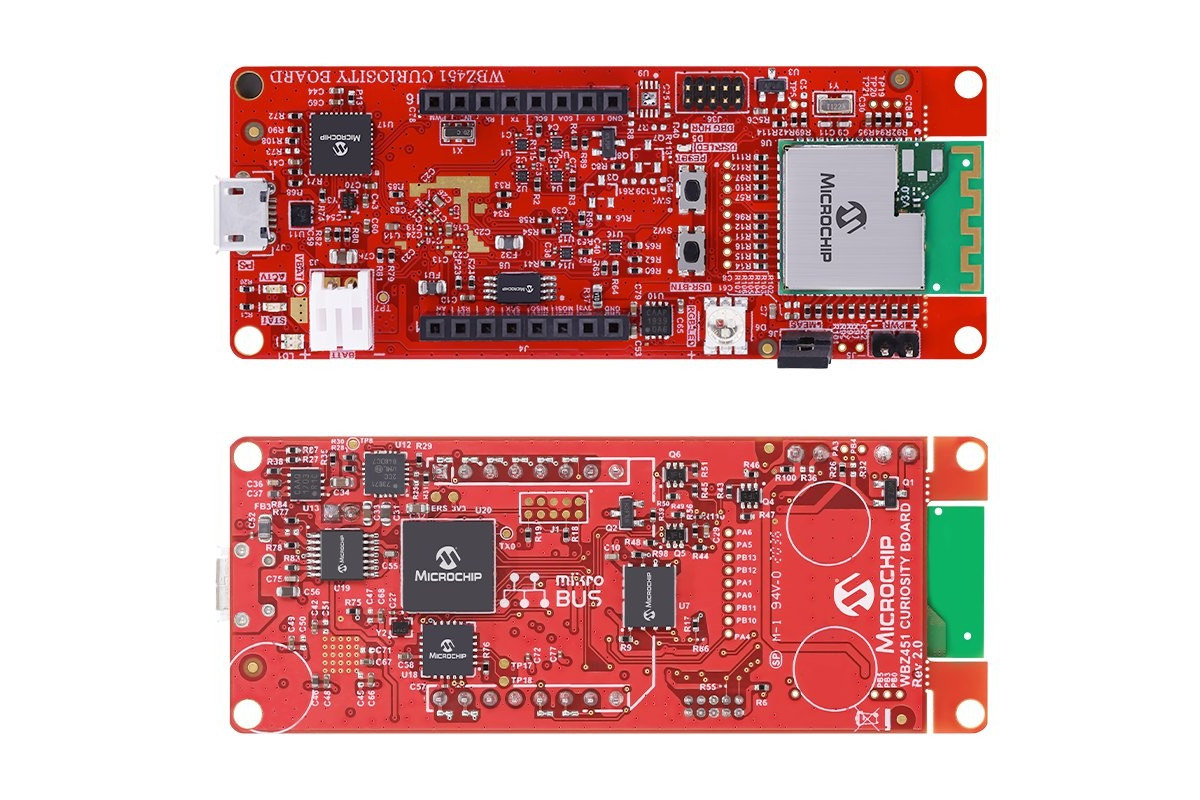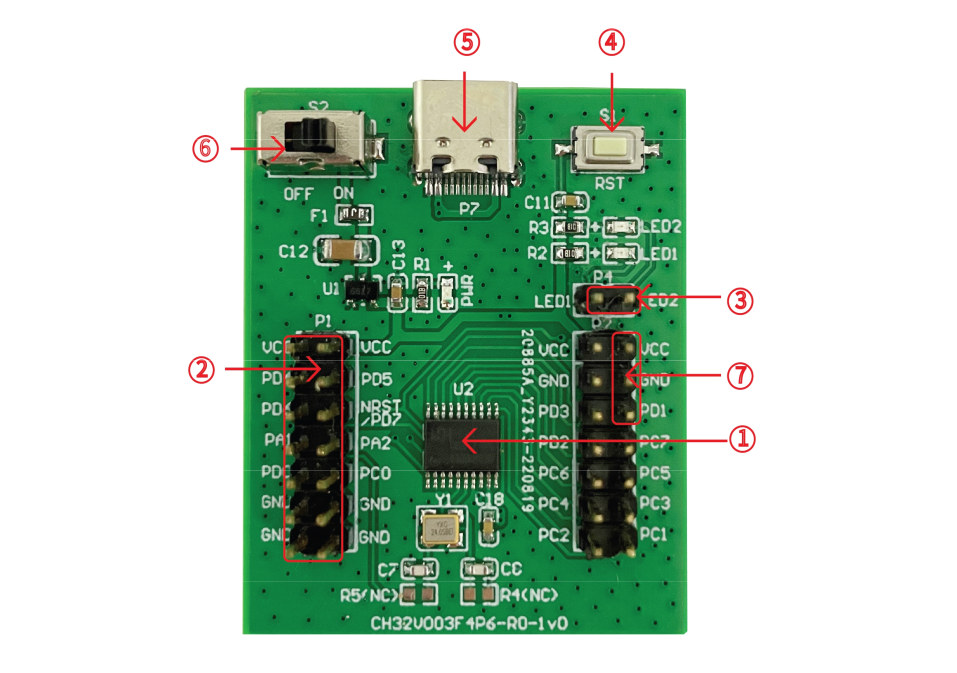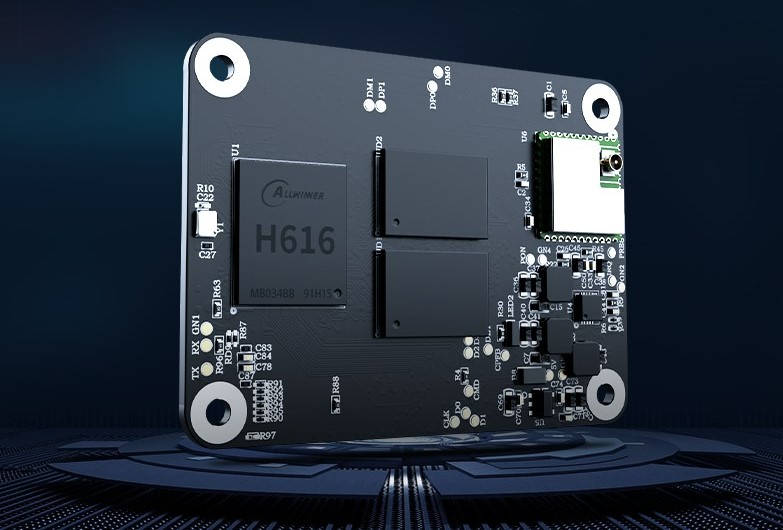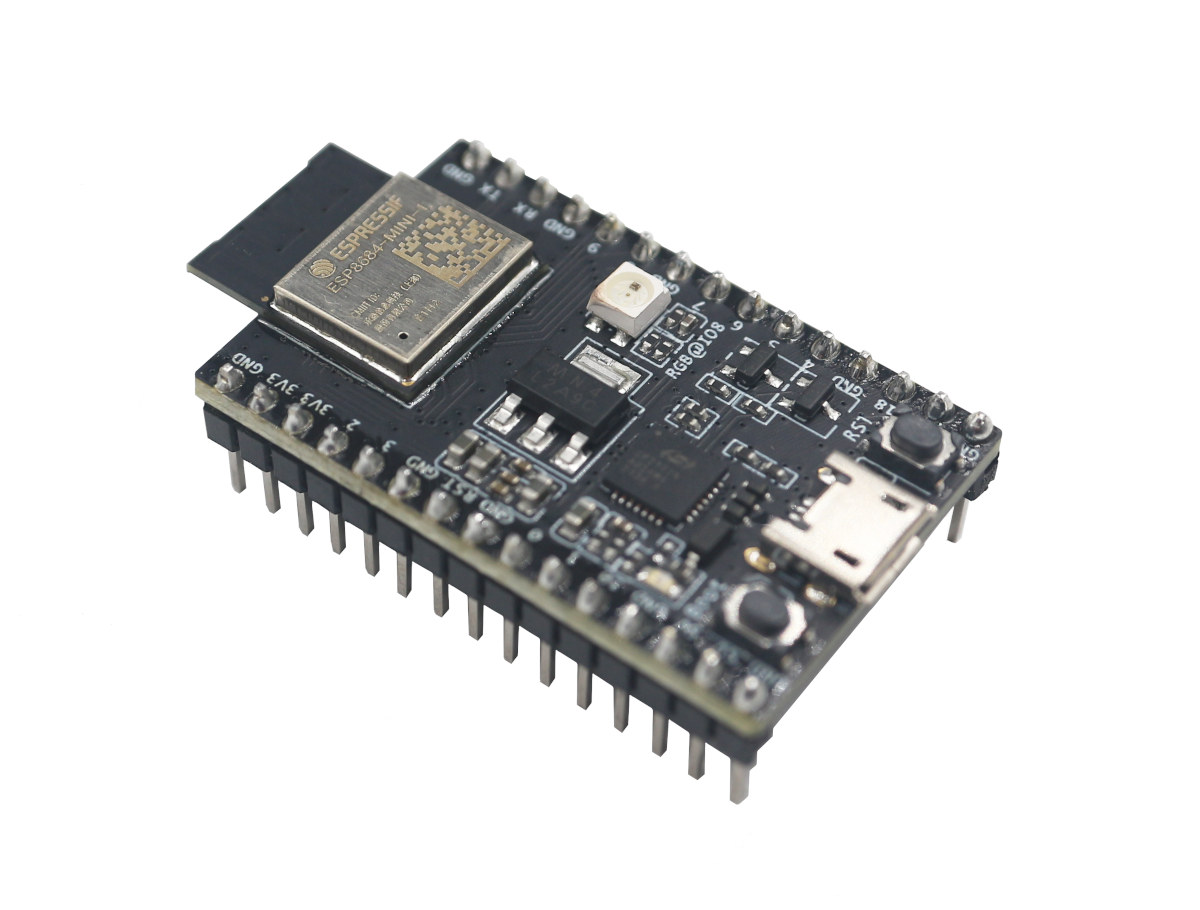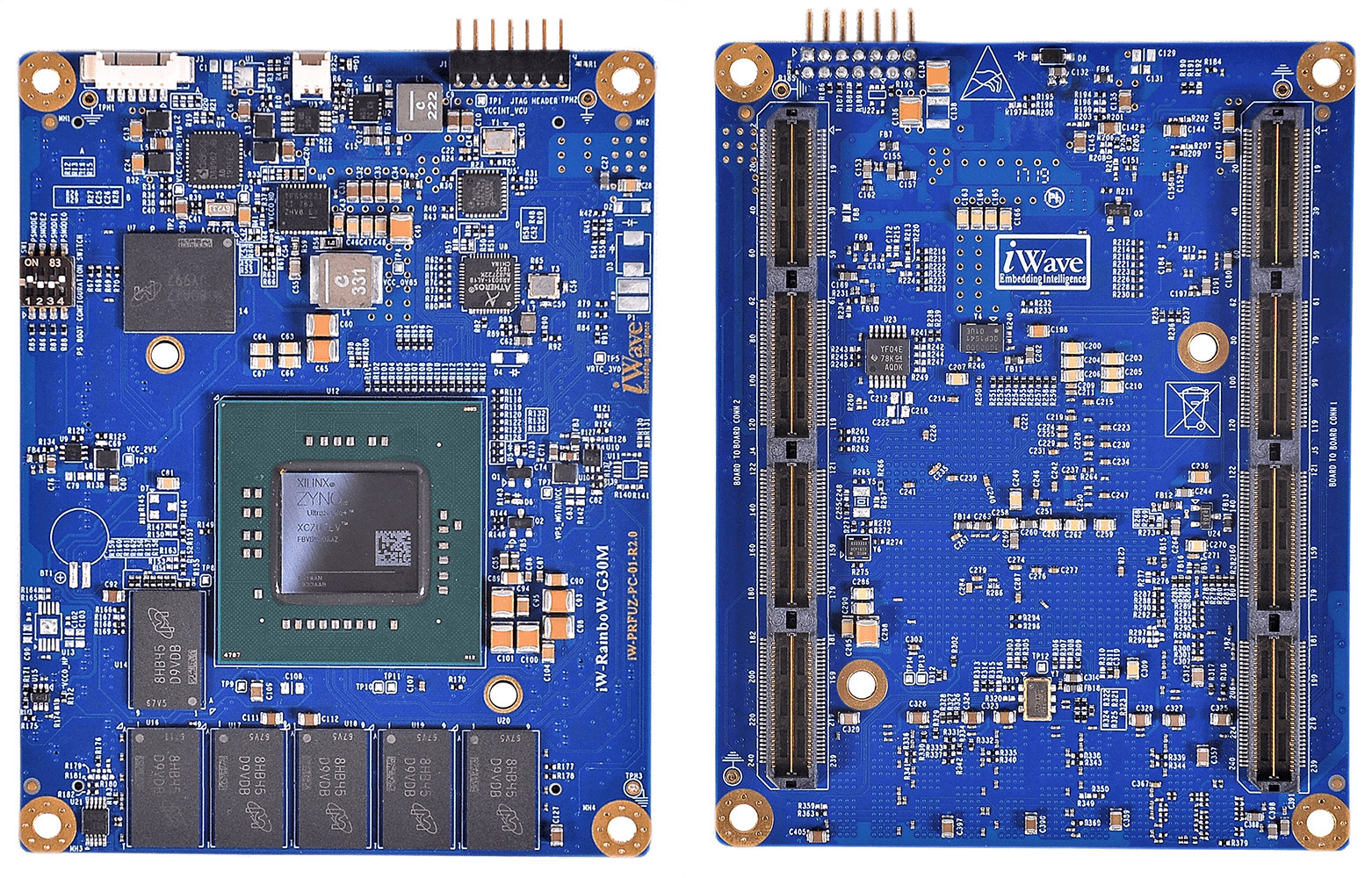The DongshanPI-D1s development board is comprised of a soldered-on Allwinner D1s RISC-V system-on-module board (SoM) and a carrier board with two 40-pin headers and a 2.0mm dedicated header. This development board is specifically designed to teach programming with a focus on the RISC-V architecture. The development board was designed by 100ask. They previously designed the Dongshan NeZha STU a development board based on the Allwinner D1. The main difference between the two is that 100ask did not include the Ethernet and HDMI interfaces on the DongshanPI-D1s board. The pinout of the headers is also slightly different because they opted to make the headers compatible with the widely used 40-pin GPIO from Raspberry Pi single board computers. DongshanPI-D1s preliminary specifications: D1s Core Lite SoC – Allwinner D1s single-core XuanTie C906 64-bit RISC-V processor @ 1.0 GHz with with 32 KB I-cache + 32 KB D-cache Memory – 64 MB DDR2 (SIP) […]
LILYGO T7-S3 ESP32-S3 board with 16MB flash, 8MB PSRAM, LiPo battery support sells for under $10 (Promo)
LILYGO has launched another ESP32-S3 development board. The T7-S3 is equipped with an ESP32-S3-WROOM-1 module with 16MB flash, 8MB PSRAM, and a PCB antenna. The board is fairly compact at 3.9×3.1 cm, can be powered through a USB-C port or a LiPo battery with charging support, and offers 40 through holes plus a Qwicc/QT I2C connector for expansion. LILYGO T7-S3 specifications: Wireless module – ESP32-S3-WROOM-1-N16R8 module with SoC – Espressif Systems ESP32-S3 dual-core Xtensa LX7 processor @ up to 240 MHz integrating vector instructions for AI acceleration, 512 KB SRAM, WiFi 4 and Bluetooth 5.0 LE & Mesh connectivity Memory – 8MB PSRAM Storage – 16MB SPI Flash USB – USB Type-C port Expansion 2x 20-pin headers with up to 29x GPIOs, 20x ADC, UART, SPI, Touch interface, 5V, 3.3V, and GND 4-pin Qwiic/QT I2C connector Misc – User LED, charging LED (blue), reset and boot buttons, power on/off switch […]
LOLIN C3 Pico is a tiny ESP32-C3 board with battery charging support
LOLIN C3 Pico is a tiny (25.4×25.4mm) ESP32-C3 RISC-V board with 2.4 GHz WiFi and Bluetooth Low Energy connectivity, a few I/Os, and LiPo battery support including charging circuitry. I tend to like Wemos/LOLIN boards, because of their small form factor, support for equally tiny shields, and low price. The LOLIN C3 Pico is no exception, and even adds a few features such as an RGB LED, an I2C connector, and support for battery power and charging. LOLIN C3 Pico specifications: SoC – Espressif Systems ESP32-C3FH4 single-core 32-bit RISC-V (RV32IMC) microcontroller up to 160 MHz with 400 KB SRAM, 4MB Flash Connectivity – 2.4 GHz WiFi 4 and Bluetooth 5.0 LE (in SoC) Expansion headers 2x 8-pin headers with up to 12x GPIO, ADC, I2C, SPI, UART (3.3V I/O voltage) LOLIN I2C port USB – 1x Type-C USB for 5V power and programming Misc – Reset button and user button, […]
WBZ451 Curiosity Board features Microchip PIC32CX-BZ2 BLE and Zigbee 3.0 microcontroller
Microchip WBZ451 Curiosity Board features the company’s Microchip’s WBZ451PE Bluetooth Low Energy 5.2 and Zigbee 3.0 RF module based on the new Microchip PIC32CX-BZ2 32-bit Arm Cortex-M4F wireless microcontroller. WBZ451 Curiosity Board (EV96B94A) specifications: Wireless module – WBZ451PE Bluetooth Low Energy and Zigbee RF Module with Microchip PIC32CX-BZ2 32-bit Arm Cortex-M4F wireless microcontroller @ up to 64 MHz, 128KB RAM, 1MB flash, 2.4 GHz radio for Bluetooth LE 5.2 and 802.15.4 (Zigbee 3.0) Tx output power – Up +12 dBm Rx sensitivity – Up to -103 dBm PCB antenna 29x I/O pins Storage – 64Mbit QSPI flash Expansion – mikroBUS socket for MikroElectronika Click adapter boards Sensor – Microchip MCP9700A analog voltage temperature sensor Debugging On-board Programmer/Debug Circuit using PICkit On-board 4 (PKoB4) based on Microchip SAME70 MCU On-board USB to UART Serial Converter with Hardware Flow Control based on Microchip MCP2200 10-pin Arm Serial Wire Debug (SWD) header for […]
10 cents CH32V003 RISC-V MCU offers 2KB SRAM, 16KB flash in SOP8 to QFN20 packages
WCH CH32V003 is a new ultra-cheap RISC-V microcontroller (MCU) clocked at 48 MHz with 2KB SRAM, 16KB flash, and a bunch of interfaces that sells for under 10 cents in quantities. The MCU offers up to eighteen GPIOs, UART, SPI, I2C, an 8-channel 10-bit ADC, and several timers in TSSOP20, QFN20, SOP16, or SOP8 packages, and a small development board is also available. WCH CH32V003 specifications: CPU – 32-bit “RISC-V2A” core up to 48 MHz Memory – 2KB SRAM Storage – 16KB flash Peripherals Up to 18x GPIO with interrupt support 1x USART interface 1x I2C 1x SPI 10-bit ADC up to 8 channels 1-Wire debug interface General purpose DMA controller Timers 16-bit advanced timer 16-bit general-purpose timer 2x watchdog timers 32-bit system timer Misc – 64-bit chip unique ID Supply voltage – 3.3/5V Low power modes – Sleep, standby Power on Reset (POR), programmable voltage detector Packages – TSSOP20, […]
BIGTREETECH CB1 – A Raspberry Pi CM4 compatible Allwinner H616 system-on-module
The BIGTREETECH CB1 core board is an Allwinner H616 quad-core Arm Cortex-A53 system-on-module (SoM) that follows the Raspberry Pi CM4 form factor and was designed by BIGTREETECH, a company whose main business is related to 3D printer motherboards and their peripherals. The BIGTREETECH CB1 comes with 1GB RAM, an HDMI output interface, 2.4GHz WiFi, and 100Mbps Ethernet. The CB1 has better multimedia capability than the CM4 with support for 4Kp60 H.265/H.264 video decoding and 1080p60 H.264 video encoding, while the Broadcom BCM2711 processor on the CM4 can only handle 4Kp60 H.265 and 1080p60 H.264 video decoding, and 1080p30 H.264 video encoding. Some disadvantages include the lack of CSI and DSI interfaces on the Allwinner H616 system-on-module and the presence of only one video output interface against two for the Raspberry Pi CM4 module. BIGTREETECH CB1 specifications: SoC – Allwinner H616 quad-core Cortex-A53 @ 1.5GHz with Mali-G31 MP2 GPU with OpenGL 3.2, […]
Espressif ESP8684 RISC-V WiFi & BLE MCU embeds up to 4MB flash in a 4x4mm package
Espressif Systems ESP8684 is a single-core RISC-V microcontroller with 2.4 GHz WiFi 4 and Bluetooth 5.0 LE (BLE) connectivity that also integrates 1, 2, or 4MB flash into a tiny 4x4mm QFN package. The SoC is listed under the ESP32-C2 product family on the Espressif website and can be found in MINI and WROOM modules, as well as the ESP8684-DevKitM-1 development kit. All three parts, namely ESP8684H1, ESP8684H2, and ESP8684H4, are designed to work in the -40 to 105°C temperature range, ESP8684 specifications: CPU – 32-bit RISC-V processor up to 120 MHz; 305.42 CoreMark; 2.55 CoreMark/MHz Memory – 272 KB SRAM (16 KB for cache) Storage – 576 KB ROM, 1 to 4MB flash (SiP) Wireless 802.11 b/g/n-compliant WiFi 4 1T1R Up to 72.2 Mbps link rate Support for 20 MHz bandwidth Station mode, SoftAP mode, Station + SoftAP mode Wi-Fi Multimedia (WMM) Antenna diversity Bluetooth 5 LE up to […]
Zynq UltraScale+ SoM with up to 12GB RAM targets LiDAR applications
iWave Systems iW-RainboW-G30M is a system-on-module (SoM) based on AMD Xilinx Zynq UltraScale+ ZU4/ZU5/ZU7 FPGA MPSoC specially geared towards LiDAR applications for scientific and military applications. The module comes with up to 12GB of RAM, 4GB for the programmable logic (PL) and 8GB for the Arm Cortex-A53/R5-based Processing System (PS), two 240-pin high-density, high-speed connectors with 142 user I/Os, 16x GTH transceivers up to 16.3Gbps, and four GTR transceivers up to 6Gbps. iW-RainboW-G30M specifications: FPGA MPSoC – AMD Xilinx Zynq Ultrascale+ ZU4, ZU5, or ZU7 MPSoC with Processing System (PS) featuring 2x or 4x Arm Cortex-A53 core @ 1.5 GHz, two Cortex-R5 cores @ 600MHz, H.264/H.265 Video Encoder/Decoder (VCU), ARM Mali-400MP2 GPU @ 677MHz, and Programming Logic (PL)/FPGA with up to 504K Logic cells & 230K LUTs System Memory 4GB DDR4 64-bit RAM with ECC for PS (upgradeable up to 8GB) 2GB DDR4 16-bit RAM for PL (upgradeable up to […]


